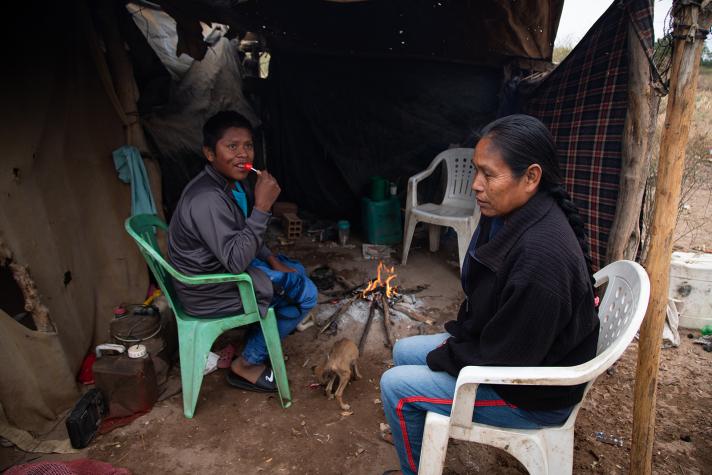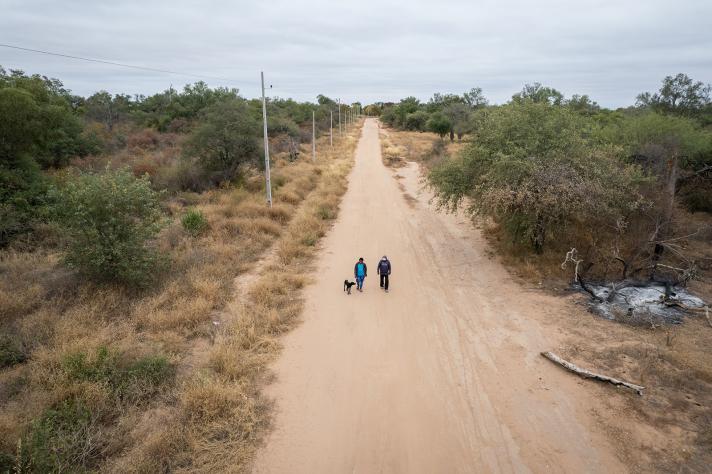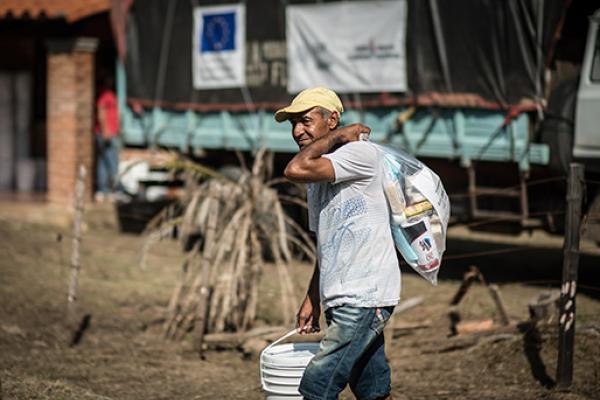The Chaco is the westernmost department of Paraguay, a vast region almost the size of Greece and Portugal together. It is divided in a desertic area with sandy soil and no water and a tropical area with dense forests.
Despite covering half the surface area of Paraguay, only 5% of its inhabitants live there. Among them, there are almost 40,000 indigenous people belonging to 19 different ethnic groups who speak 14 tribal languages and live in isolated and hard-to-reach communities.
In the land they inhabit there is almost zero government presence and they struggle to access all basic services, such as health, education, water, sanitation and hygiene. Climate change and deforestation are making their life even harder, pushing them further into vulnerability: 75% of Paraguay's indigenous people live in poverty and 60% of them in a situation of extreme poverty (IWGIA, 2022).
The EU works with UNICEF to better equip schools in indigenous communities in the Chaco and create a safer and more welcoming environment so that students can receive their education.
13-year-old Marcio is an indigenous child from Paraguay. Every day he walks six kilometres to reach the nearest school. He does not let the distance, the heat, or the cold weather prevent him from pursuing his dream. "I want to become a teacher to help my community. It doesn´t matter if the school is far from my house, I like walking,” he says while smiling and rubbing his hands inside the pockets of his thin jacket.
Marcio belongs to the Nivacle tribe, which lives in some of the harshest parts of the Chaco where the vegetation is typical of the savannah and the weather is unforgiving. Scorching heat and frost take turns without giving respite to the local population, who has to struggle for survival. Water resources are scarce and most of them are saline.
Most indigenous villages have wells to store rainwater, but they are drying up faster than expected due to the worrying lack of rain. “We are suffering and not only in this community,” says Mateo Pereira, an indigenous farmer who has witnessed his crops diminishing through the years. “Because of droughts, heavy rains, wind and frost all our crops get destroyed. This is the third yield in a row that I lose.”
The coronavirus lockdown measures made things even worse, especially for the education sector. "Our school was closed for two years because of COVID-19. Teachers delivered homework to our homes, but it was not the same," regrets Marcio.
Now students are gradually returning to the classroom, but before welcoming them back, most schools required significant adjustment to their infrastructures to guarantee that children and staff could safely continue the learning process.
Access to water, hygiene, and sanitation are paramount to a safe return to classes and one of the most efficient measures to prevent for infection.
"Education means more than having access to school supplies, staff, and a physical place to study," says Roman Majcher, Rapid Response Coordinator for the Americas and the Caribbean at the EU's Civil Protection and Humanitarian Aid Operations.
"Access to education also means access to safe drinking water and sanitation facilities, so students do not have to waste class time to fetch water or miss classes due to water-related diseases or lack of separate sanitation facilities."
The EU allocated €700,000 to UNICEF to strengthen water, hygiene, and sanitation facilities in schools in the Chaco, so that children and adolescents can attend class and be safer in case of potential future diseases.
"Before this help came, the school's water wells were broken, so neither the students nor the community had access to water," says Jose Luis Ramirez, who teaches Spanish in a high school where adolescents from ten neighbouring villages study.
"We are happy now because we have water again and, for the first time, the school has toilets and handwashing stations. Now we can offer better conditions to the 198 students that come to classes."
Story by Ruth Silva Romero, Information and Communication Assistant, EU Civil Protection and Humanitarian Aid Operations
Publication date: 09/08/2022











